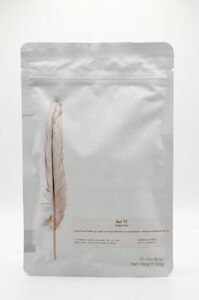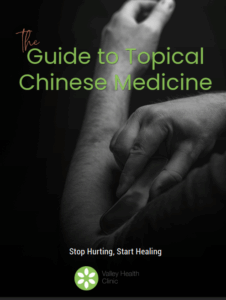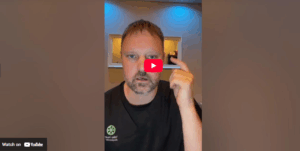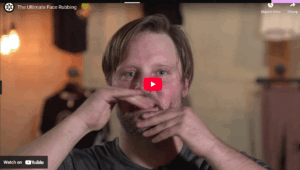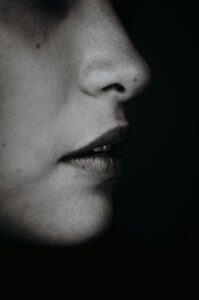Breathing
Laydown and Relax. If the Mind that is stressed it can easily override the natural reflexes we are trying to feel. For example Mental stimulation prevents bradycardia during a breath hold (Ross & Steptoe, 1980), which showed Bradycardia was attenuated by mental arithmetic in both air and water.
- Lay Down (relax the body)
- Lay Down (Relax the mind)
(Blood going down and out)
1) Exhale all your air and hold.(20-40 sec, exaggerated sign)
Co2 levels will start to rise, which will begin to open blood vessels to your hands and feet. Stay relaxed you will feel diaphragm contraction, it may even go into diaphragm lockdown, this will also push blood away from your core down to your hands and feet. You are feeling QI and Blood going down and out.
Recover minute. The sensation is very powerful and outward. During the breath hold c02 level increased making your blood more acidic which makes it easier for Hemoglobin to release oxygen. While you recover. Your tissue is easily receiving oxygen. You probably also had a spleen contraction which released more red blood cells into your system which will make any other breath-holds easier. Notice what this feels like .
(Blood going in and up)
2) Huff and Puff (30-60sec)
Hyperventilate until you feel tingling and then do a full lung breath-hold. Your C02 levels have now dropped. The Tingling you feel is your blood vessels contracting. The full breath into the chest has closed off your throat. As you hold your breath and relax. Your soft diaphragm will relax and be pushed on by gravity but your hard chest/lung will say full. You will feel more pressure in your head. You are feeling Qi and Blood going in and up. Hold this until you feel a contraction to make sure you c02 levels come back up
Warning If you have a condition called postural orthostatic tachycardia syndrome (POTS), you’ll experience significant increases in your blood pressure stop if you get too light-headed.
Hydrotherapy
Cold Water
(Blood going in and UP)
1) Get in a Cold Shower
Cold water immersion induces significant physiological and biochemical changes in the body such as increase in Heart Rate, Blood Pressure and metabolism, Release of the hormones epinephrine and norepinephrine from the adrenal medulla of the adrenal glands is part of the fight-or-flight response.
This has an Antidepressive effect of cold shower (depressed people have qi that goes down and out) attributed to the presence of high density of cold receptors in skin expected to send an overwhelming amount of electrical impulses from peripheral nerve endings to the brain kind of like shock therapy.
(Notice your blood/qi going in and up.)
2) Do a full breath hold and wait until you feel the beginning of contraction, then put your face into Cold water.
This stimulates, the trigeminal nerve which will cause the heart to slow, blood pressure to drop, and cerebrovascular vasodilatation. The magnitude of the bradycardia response to breath holds depends largely on the extent of facial cooling.
Notice the Blood/Qi is now going in and down
Notice your contractions will feel less and you get a Tunnel vision feeling.
Tip: You have to say calm and relax or your stress will override this “dive reflex”:
Warm Water
Release and Harmonize the exterior.
1) Get the water hot and have it hit the back of your neck.
The amazing warmth and relaxation should cause Goosebumps. Goosebumps not only respond to cold but the emotions. The sensation of the warm should cause goosebumps. Goosebumps happen on the hairier parts of your body and is similar to sweating. This is the sensation of releasing the exterior.
Clinical Note
Sauna Therapy increases endothelial nitric oxide synthase (eNOS) activity and improves cardiac function in heart failure and improve peripheral blood flow in ischemic limbs.
There is a strong inverse association between regular sauna bathing habits and the risk of dementia and Alzheimer’s disease in middle-aged Finnish men.
Sauna bathing, an activity that promotes relaxation and well-being, may be a recommendable intervention to prevent or delay the development of memory diseases in healthy adults. Further study is however needed.
Since hypertension damages blood vessels, it’s easy to see how it contributes to vascular dementia. Although the link to Alzheimer’s disease is less obvious, research suggests that vascular damage and tissue inflammation accelerate injury.
Seated Meditation
Pause on the exhale (You can do this throughout your mediation.)
If you can slow your breathing down below your body’s metabolic demand it will slowly increase C02 levels. You can do this buy just breathing slow and or pausing your breath on the exhale. When you start to have the build-up of C02 and urge to breathe you can need to relax more and decrease the metabolic and it will go away. This is a good Biofeed back method. This is much more gentle then the above methods.
Freedivers do something similar but it is call a Co2 table and looks like this.
The CO2 tables build a tolerance to the high level of carbon dioxide in the blood. Rest time in this table decreases with each round while an apnea time stays the same:
Apnea: 2:00, Rest: 1:45
Apnea: 2:00, Rest: 1:30
Apnea: 2:00, Rest: 1:15
Apnea: 2:00, Rest: 1:00
Pause on Inhale Valsalva Breath-Hold.
(Don’t do this for a very long time.)
Phase one
Breathe in and hold, while bear down causes the pressure in your chest to increase. That’s because the pressure in your aorta inside your chest briefly increases, and blood is forced out of your heart to your limbs and the rest of your body.
This first phase causes a temporary spike in your blood pressure.
Phase two
The second phase causes a steady drop in blood pressure as a limited amount of blood in the veins returns to the heart.
This lower amount of blood returning to the heart results in less blood pumped from the heart and a fall in blood pressure. Your ANS senses this pressure drop and responds by increasing your heart rate and output, and contracting your arteries.
All of this leads to the return of blood pressure to a normal range if your ANS is healthy.
Phase three
At the end of the maneuver, you relax and your blood pressure falls for a few moments. This is the third phase.
Phase four
Soon, blood starts rushing back to the heart. After a few heartbeats, blood flow should be back to normal and your blood pressure will rise because your blood vessels are still constricted.
The blood pressure increase ideally causes the heart rate to come back to normal. That’s phase four.
Restoring heart rhythm
The shifts in blood pressure and heart rate as you move through the four phases of the maneuver can often restore a normal heart rhythm when your heart is experiencing tachycardia.
The pattern of your heart rate and blood pressure changes through the various phases of the Valsalva maneuver works both sympathetic and parasympathetic nerve functions.
If you have a condition called postural orthostatic tachycardia syndrome (POTS), you’ll experience significant increases in your blood pressure during phases two and four.
POTS is a condition in which your blood pressure drops dramatically when you stand after you’ve been sitting or lying down. It can be a very serious health problem, leading to fainting, falls, and other complications.


 Willard Sheppy is a writer and healthcare practitioner who seamlessly melds scientific knowledge with practical applications in engaging and authoritative articles. He holds a Bachelor of Science in Environmental Science from Oregon State University and a Master’s in Acupuncture and Oriental Medicine from the distinguished Oregon College of Oriental Medicine.
Willard Sheppy is a writer and healthcare practitioner who seamlessly melds scientific knowledge with practical applications in engaging and authoritative articles. He holds a Bachelor of Science in Environmental Science from Oregon State University and a Master’s in Acupuncture and Oriental Medicine from the distinguished Oregon College of Oriental Medicine.